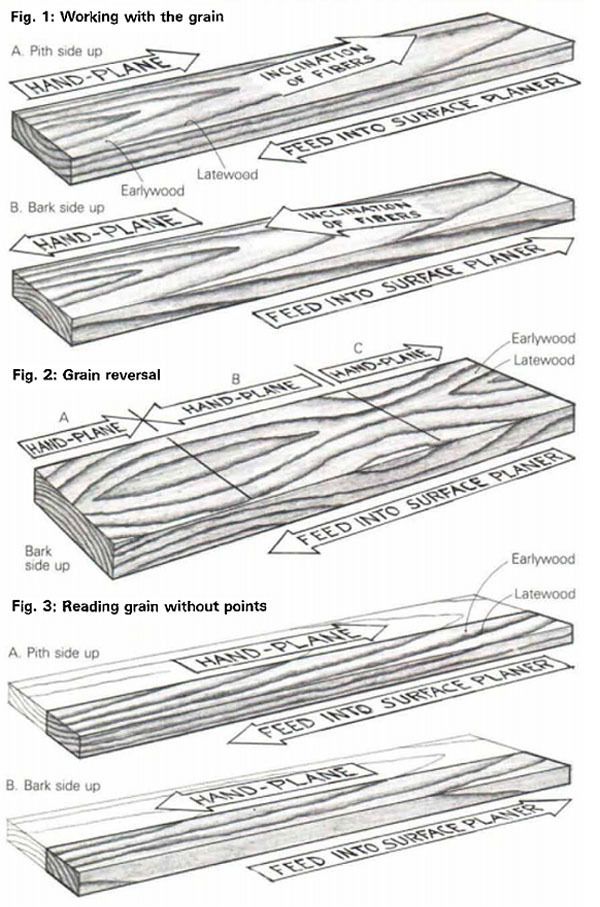
Synopsis: R. Bruce Hoadley has a useful tip for reading boards quickly; his memory crutch goes like this: pith side, plane with the points; bark side, backwards. However, he admits that it’s not always that simple, and he addresses more complicated situations in this concise article, such as with grain reversal and grain without points. Drawings with grain markings help show what he’s conveying.
Before feeding a board into a surface planer or hand-planing it, it’s important to read the board’s grain, or you risk tearout. There are many routines for doing this. Most woodworkers simply examine the edge of a board to determine the inclination of the cell structure. But close scrutiny may sometimes be too time-consuming, as when feeding a large quantity into a jointer or a surface planer, or when you simply cannot see any useful detail because the lumber has roughsawn edges. Even-grained and finetextured woods such as basswood pose similar problems.
One helpful gimmick when planing flatsawn boards is to use the board’s U-shaped or V-shaped surface figure to determine grain inclination. As shown in figure 1, on the pith side of a board (the heart, or inside, of the tree), the rips of the Vs point with the grain, so you would hand-plane in that direction. On the bark side, the Vs point against the grain. My memory crutch goes like this:
Pith side, Plane with the Points (of Vs) Bark side, Backwards
The rule works on boards with any visible V-shaped markings. After a while it becomes automatic. You instinctively glance at the end when you pick up a board; if you arc working a pith side, you subconsciously handplane with the points, and so on.
Of course, with wood it’s not always that simple. For example, you may have a board with Vs going in both directions. Let’s assume you have a board that has a bark side surface with the appearance shown in figure 2. The “bark side, backwards” rule of thumb helps you recognize zones of the board, so you would hand-plane zones A and C from left to right, as shown, but zone B from right to left. If you keep in mind that the knives of jointers and planers actually cut in the opposite direction to the direction of feed, reading the Vs would also help you decide to send the board into a planer left-end-first. You can anticipate good results over most of the board (zones A and C), but with possible trouble where the cutterhead would be working against the grain (zone B). Knowing where the troubles will occur, you can take lighter cuts, slow the race of feed, or use alternatives (such as abrasive planers or sharp hand-tools) to minimize filling and sanding later.
From Fine Woodworking #43
For the full article, download the PDF below:
Fine Woodworking Recommended Products

Bumblechutes Bee’Nooba Wax


AnchorSeal Log and Lumber End-Grain Sealer






















Log in or create an account to post a comment.
Sign up Log in